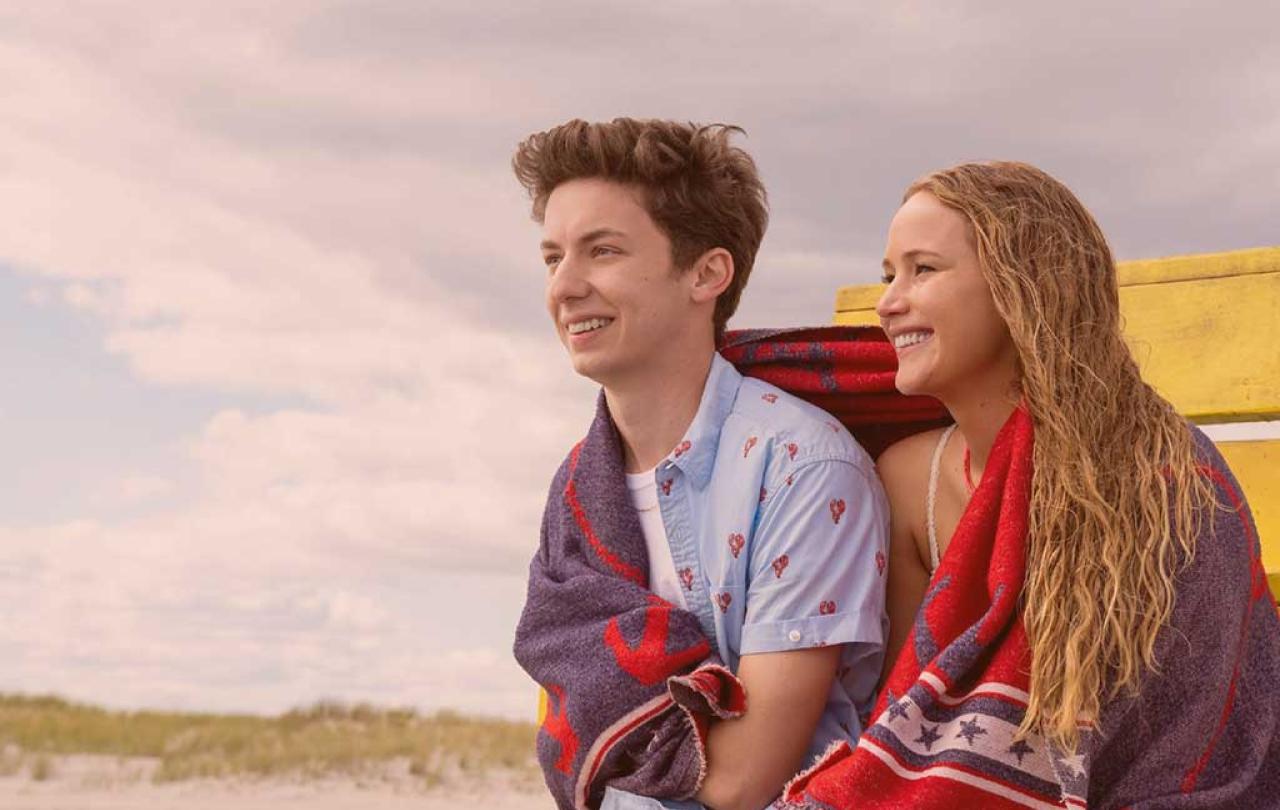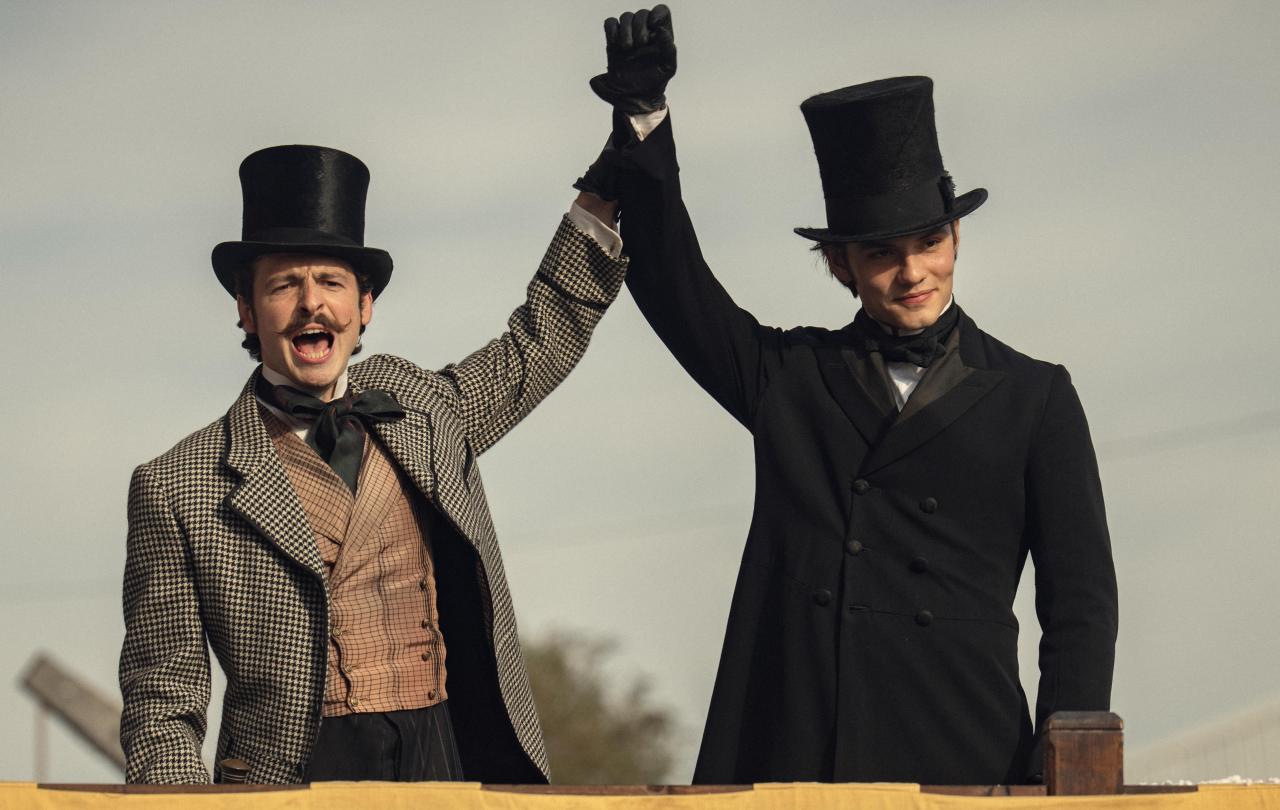
I hate to sound like your moany Uncle Raymond, but they just don’t make romcoms like they used to. The likes of 10 Things I Hate About You, Clueless and She’s All That have never been replicated in recent times and attempts to recreate the 90s nostalgia have always fallen flat on their face.
It’s for this reason, I was excited when I saw No Hard Feelings hit the cinemas. The latest Jennifer Lawrence movie was pitched as a hilarious coming-of-age tale for the modern era. The story sees strapped-for-cash millennial Maddie (Jennifer Lawrence) hired by the parents of an introverted gen-z lad Percy (Andrew Barth Feldman), to help him into blossom into maturity – via the medium of sex. The meddling helicopter mum and dad were concerned their talented 19-year-old was more interested in computer games than socialising and fornication.
The film is silly. If you’re reading this to establish whether you should go and see it, I would say sure – if you want a low-emotional-investment flick that you’ll watch once but not twice. But the question it raised for me was: How do we know when we’ve grown up?
I felt I was most grown-up when tackling things alone. I wanted to be open to all experiences on the spectrum of sensible to reckless.
If the initial premise of the film is anything to go by, growing up means embracing partying, reckless behaviour, drinking and losing your virginity. This is, probably word for word, how 14-year-old me would have described maturity. In my adolescence, I believed that increased maturity meant more independence. I felt I was most grown-up when tackling things alone. I wanted to be open to all experiences on the spectrum of sensible to reckless. I formed opinions hastily and defended them resolutely. I was desperate to be trusted and to be “my own person”. My parents were a humiliating presence in my life who crowded my decisions with their own, old-fashioned logic. From my perspective; the less they were allowed influence, the better. To me, being an adult involved doing “adult things”, those that came with a legal minimum age requirement.
This is the kind of “maturing” that Percy is encouraged to do in the film. Maddie orders him a strong alcoholic drink, attempts to lure him into casual sex and persuades him to skinny dip. She instructs him to consider himself an adult and to distance himself from his parents (in fairness they did have a tracker on the 19-year-old’s phone and had hired a woman to take his virginity, so she probably wasn’t wrong in this instance). By all accounts, it seemed Maddie considered maturity to involve the same things as I did at age 14.
But I’ve come to realise that these milestones are often just touchpoints in a maturing process that is entirely circular. Stay with me on this one; ideally, we start life reliant on those who care for us, ensuring we eat well and get enough sleep, we spend time developing and learning, backing away from things that are likely to cause us pain. Then many of us ‘grow-up' and break free from those who raised us. We are no longer so careful about what we eat or how long we sleep, we begrudgingly continue learning or some shun education altogether. We are enticed by things which may or may not provide a short-term amusement but will definitely harm us in the long term. But the loop closes up.
We come to the realisation that true maturity is acknowledging that life is designed to be lived in community, reliant on those around us.
As we move away from the excitement and poorly judged choices we associated with maturity, we realise that we do, in fact, want to spend time with those who care and cared for us. We seek their wise counsel rather than avoiding it. We come to the realisation that true maturity is acknowledging that life is designed to be lived in community, reliant on those around us. And most crucially – asking for help isn’t childish but the most mature thing of all.
We start to want to care for our bodies. The idea of a hangover is repulsive and to be avoided at all costs, rather than a necessary penance for a fun night with friends. We want to invest in our growth and development in all the ways; emotional, mental, academic and spiritual. We start to self-impose the restrictions that we railed against in our youth. The idea of a 10pm bedtime is absolute bliss and events that start at 9pm are abhorrent.
By Maddie’s metrics, I grew up at 15, but by mine, I was 25. It wasn’t until then that I started asking myself questions about the person I wanted to be – not the one I thought others wanted of me. This is when I walked into a church and when I decided that really understanding what I believed was important. It’s also when I started letting thoughtful people speak into my life rather than being convinced that I knew better.
Despite being a decade on from that period of inviting in development and support, I still can’t be certain I’m done growing up, but I wonder if acknowledging that truth is its own form of maturity. From time to time, I get behind the wheel of a car from time to time and think: “Does anyone know I’m doing this unsupervised?” And when I babysit young children, I half expect a real grown up to come over and relieve me of the responsibility, telling me I’ve done a good job but they’ll take it from here. I asked a woman in her 70s when she finally knew she was an adult, she replied:
“I don’t know if anyone truly considers themselves grown up.”
The film perfectly illustrates our rush to mature, our societies’ obsession with collecting milestones and experiences and our warped idea of what adulthood should look like. But when I reflect on the maturing process, all I can conclude is that the more we grow in childlike awe, wonder and accepting of our limitations – the more mature we become.





